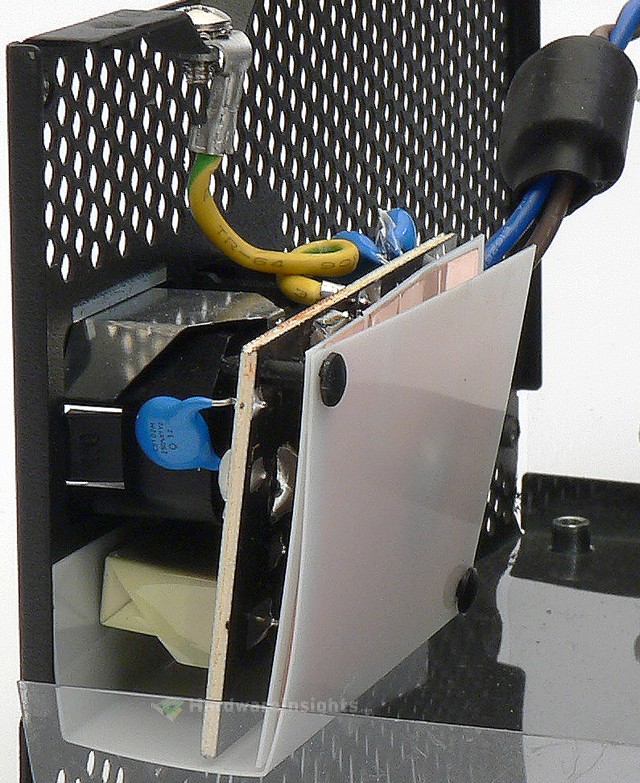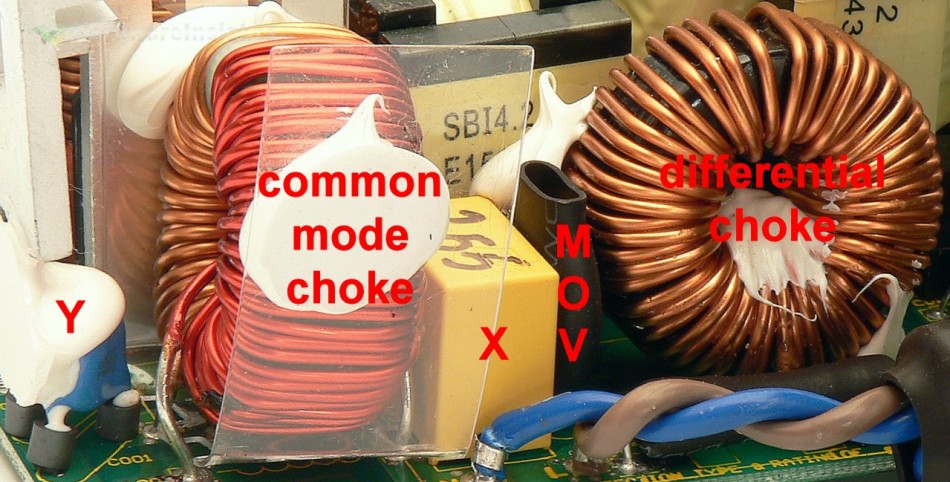Contents
- 1Introduction
- 1.1Packaging and accesories
- 2Connectors & cabling
- 2.1Casing & cooling
- 3Input filtering
- 4Primary side
- 4.1+5 V stand-by rail
- 5Secondary side
- 5.1Build quality
- 6Load testing
- 6.1Loading +5 V SB
- 6.2Combined loading
- 6.3Combined loading ripple
- 6.4Crossloading, overloading
- 6.5Crossloading, overloading ripple
- 7Conclusion and evaluation
- 7.1Thanks
Input filtering
The first part of the input filtering inside the S12G is the same as in many Seasonic units on the market right now. It starts with separate board soldered directly onto the input AC receptacle and AC switch and carries one film X capacitor, four Y ceramic capacitors and common-mode choke. Discharge resistor is present. This board is also shielded from the rest of the unit with insulated and grounded copper sheet. The wires from this part to main board also come through a ferrite core.
Second part of the filtration is on the main power board itself, consisting of a differential choke, another X capacitor, another common-mode choke and two Y capacitors. There is also a metal-oxide varistor (MOV). Thermistor is not in this picture, it is located in front of input capacitor. Neither an X-cap discharge IC nor relay thermistor-bypass is present, that’s gonna be some small point loss as having at least one of those is one of my requirements for units in the high-end segment.
X capacitors (between phase and neutral) and Y (between phase and ground/neutral and ground, often also between one side of the high-voltage DC and ground) are used to filter out high-frequency ripple from power grid (often from devices which lack filtration because of cost cutting, but also from devices where filtration is very difficult to implement) and also keeps ripple from this unit from entering the grid. Chokes are used for the same reason, together they form an input filter. These components may also (partially) help to filter smaller voltages spikes in the power grid while the MOV is used to suppress more serious spikes (for example from lightning hitting power grid at a distance). These days, more Y capacitors are used even between rectified ground (ground after an input rectifier) and earth ground to suppress internal interference and keep it from getting to secondary side, because really high-frequency ripple goes everywhere it can to some extent (including coupling through the insulation, metal casing etc.). That is also why the AC conductors themselves are often inserted through the ferrite core.



